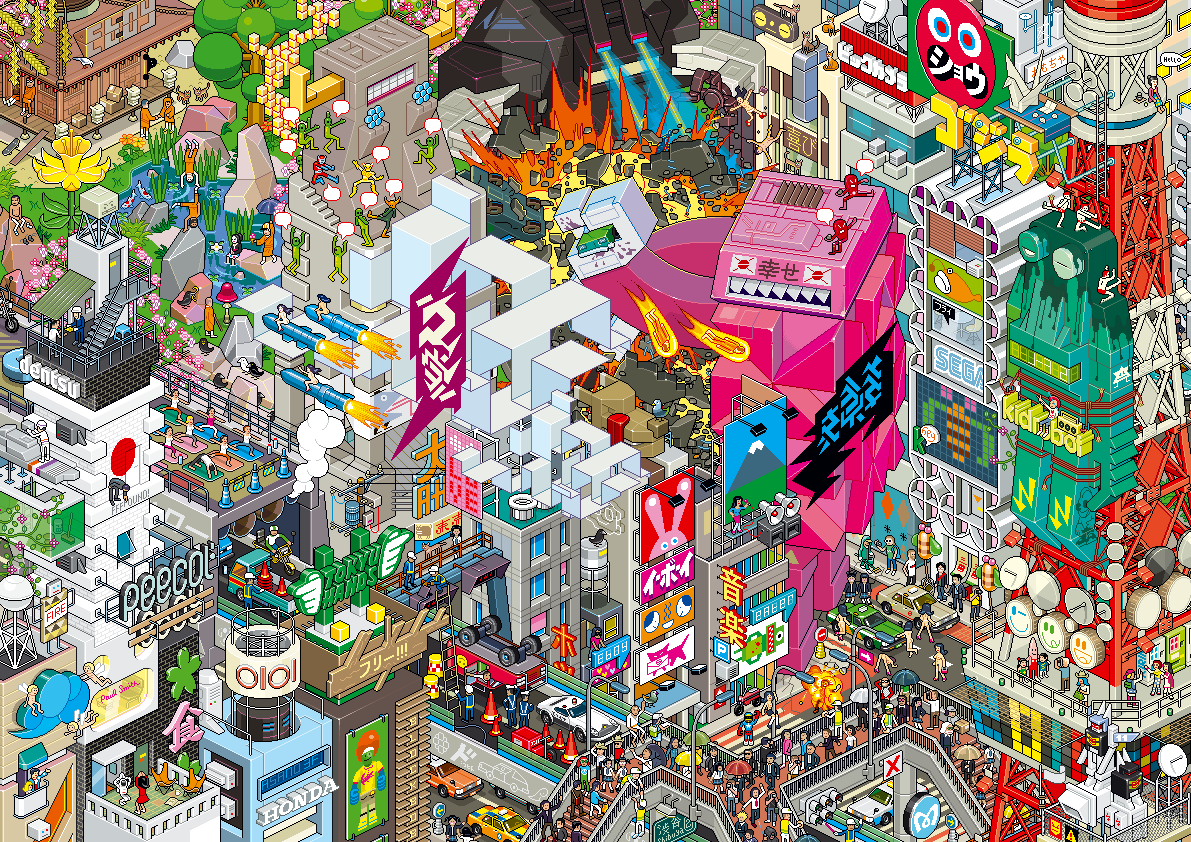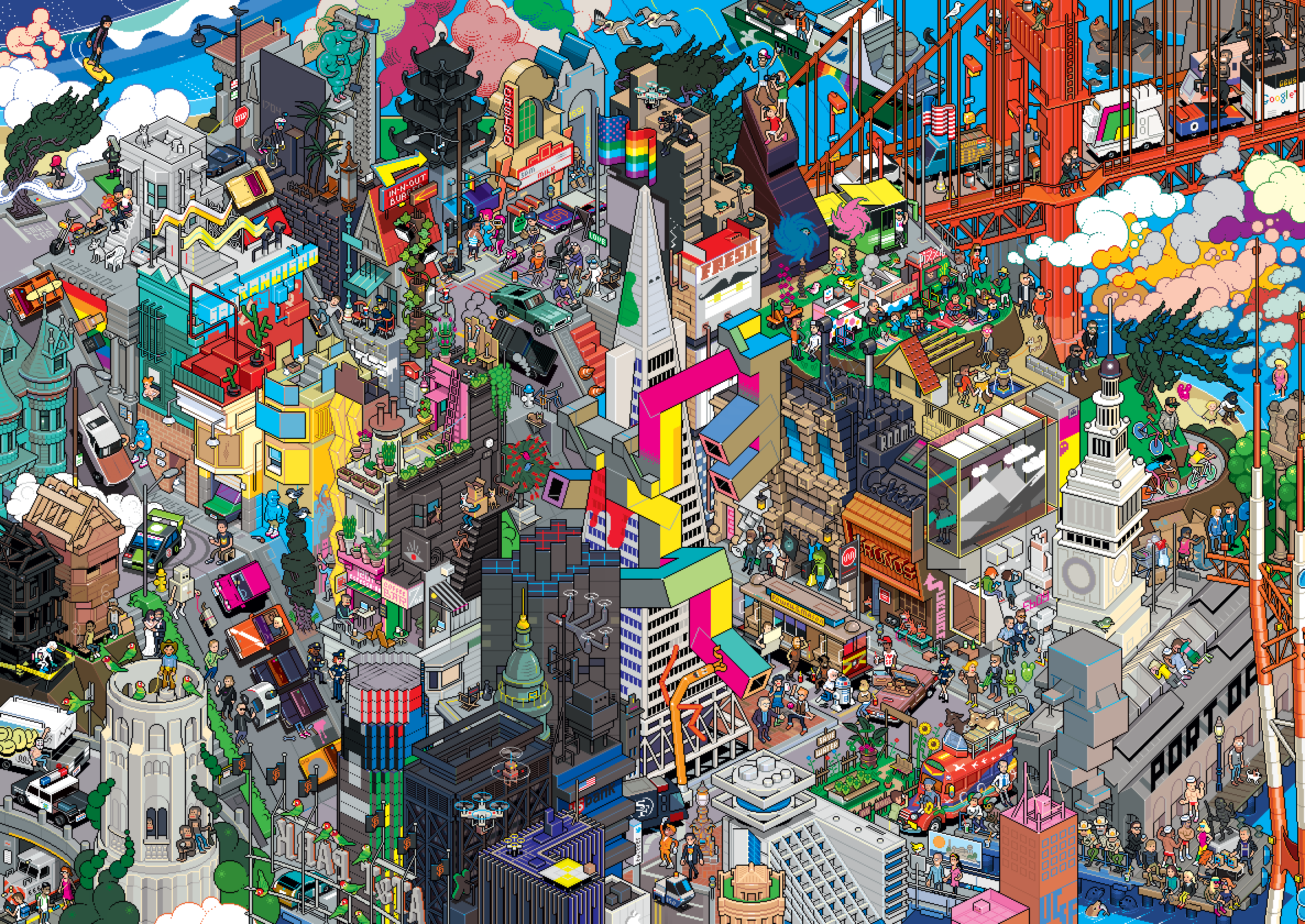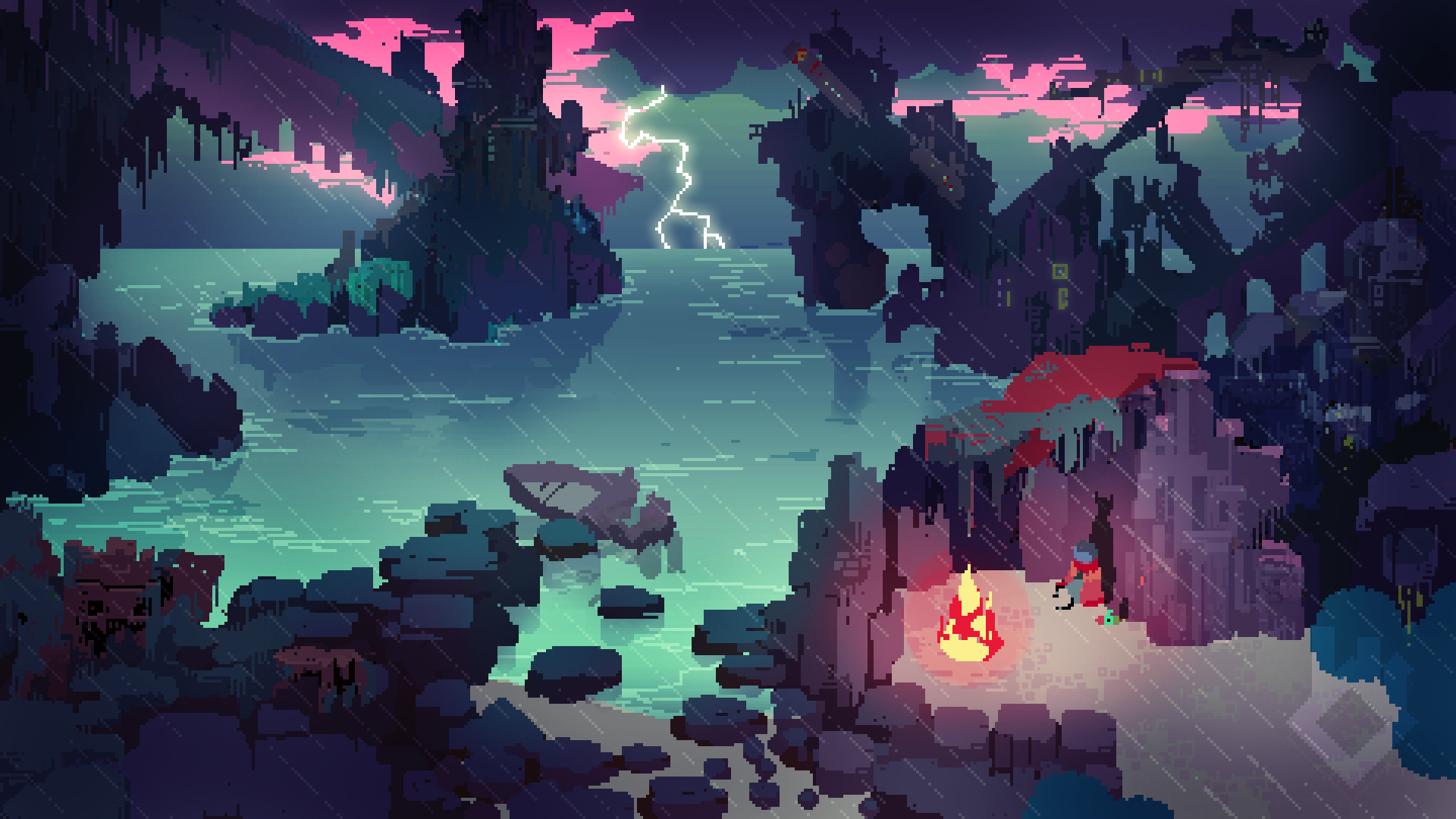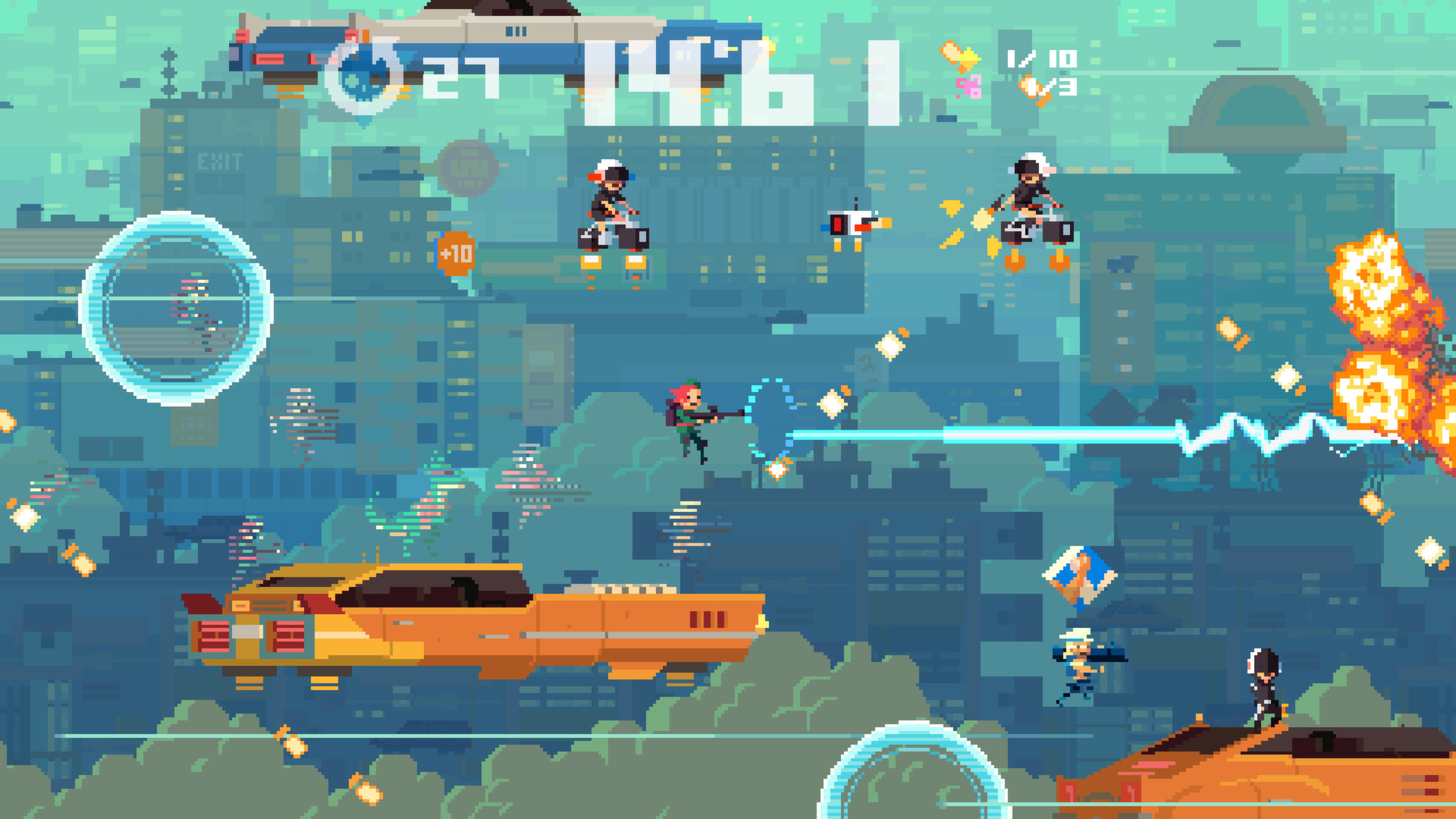
Pixelrama of Tokyo by eBoy
An aesthetic with which I have had interest in for a while is Pixel Art. Popularized during the 1980s and 90s in video games, the aesthetic has been revived in recent years due, in part, to the nostalgia each tiny square carries with it. The idea behind pixel art is that the content is produced, square by square, from the ground up. The images above and below are an example of pixel art, and were produced by a team of three designers from Germany called eBoy. The image above is a depiction of Tokyo, while the image below is a depiction of San Francisco. eBoy is famous for using the 8-bit, pixel art aesthetic to produce ad campaigns, posters, animations, and depictions of cities around the world (like the one’s shown here), which eBoy calls “pixelramas”.

Pixelrama of San Francisco by eBoy
Another instance in which pixel art has shown prominence is in the independent games industry. Recent games like Hyper Light Drifter and Super Time Force use the 8-bit aesthetic to harken back to video games eras of the past, which renders feelings of intense nostalgia for many players. But it isn’t just the visual aesthetics of these games that induces nostalgia and makes use of the pixel art aesthetic; the music produced for games with this aesthetic fall into the genre of what is called chiptune. If you played games in the 90s on systems like the Super NES and the Sega Genesis, than you have most certainly listened to chiptune music at some point in your life. The light, upbeat bleeps and boops of chiptune know just how to tug at the heartstrings of even the most casual gamer, and are the prefect compliment to the 8-bit visual aesthetic of these games.

Still from Hyper Light Drifter by Heart Machine

Still from Super Time Force Ultra by Capy Games

4 Comments. Leave new
nice naked people
I have lots of respect for these pixel artists to make something on such a massive scale. I used to actually make pixel cars way back for yeeaaars when it was still popular. I think what really appealed to people with pixel art in general is the isometric view or whatever its called. I don’t know if you ever played an online game way back then called Habbo Hotel. It was pretty much an online social platform around isometric pixel art and it was awesome. This post has brought back lots of memories, I would love to make more pixel art if I ever find the time again.
I agree with Brandon! It totally has it’s own recognizable style, even outside of 8-bit game enthusiasts. I’ve seen these pixel art collages in Japanese American restaurants too.
Chiptune music might be included in that “own recognizable style” too…. though I don’t think I’d listen to it on it’s own… but certainly hand in hand with pixel art!
While I see how this style can incite nostalgia in some long term gamers I believe that pixel art is an appealing aesthetic on its own. Someone who has not played 8-bit games would still notice the vibrant colors and the complexity that can be achieved using simple computer graphics. Aside from the cartoon style, Being able to create the illusion of 3D using only pixels is an art form in itself. I think these are some of the main reasons why 2D pixelated video games are still being made.